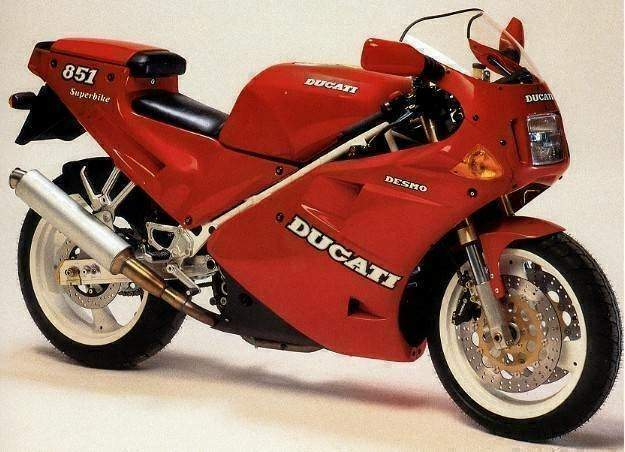
|
|
|
|
|
|
Classic Bikes
Custom Bikes
Individual
Racing Bikes AJP
AJS
Aprilia
Ariel
Avinton / Wakan
Bajaj
Benelli
Beta
Bimota
BMW
Brough Superior
BRP Cam-Am
BSA
Buell / EBR
Bultaco
Cagiva
Campagna
CCM
CF Moto
Combat Motors
Derbi
Deus
Ducati
Excelsior
GASGAS
Ghezzi Brian
Gilera
GIMA
Harley Davidson
Hero
Highland
Honda
Horex
Husaberg
Husqvarna
Hyosung
Indian
Jawa
Kawasaki
KTM
KYMCO
Laverda
Lazareth
Magni
Maico
Mash
Matchless
Mondial
Moto Guzzi
Moto Morini
MV Agusta
MZ / MuZ
NCR
Norton
NSU
Paton
Peugeot
Piaggio
Revival Cycles
Roland Sands
Royal Enfield
Sachs
Sherco
Sunbeam
Suzuki
SWM
SYM
Triumph
TVS
Ural
Velocette
Vespa
Victory
Vincent
VOR
Voxan
Vyrus
Walt Siegl
Walz
Wrenchmonkees
Wunderlich
XTR / Radical
Yamaha
Zero
Video
Technical
Complete Manufacturer List
|
Ducati 851 Strada
After buying Ducati, Cagiva invested in the
development of another V-twin, but with liquid cooling, and four valve
desmodromic heads. Massimo Bordi, had designed a 4V Desmo in 1973 for his thesis
at the University of Bologna, and with Cagiva in 1985, saw his updated ideas
come into production as the Desmoquattro.

Ducati 851 vs Ducati 1199 Panigale
Remember the Ducati 851? It came out in 1987 and
blitzed the world of sportsbikes like few other machines have ever managed to.
Desmoquattro V-Twin, liquid-cooling, fuel-injection, four-valve cylinder heads,
95bhp and a top speed of about 240km/h made the bike a bit special 25 years ago
and that’s the way it remains today. The Ducati 851 was pretty much the top dog of its time, the baddest boy on the block. And that makes you wonder how the bike would stack up against the modern day Ducati 1199 Panigale, a bike that has, in one fell swoop, made every other superbike on the planet look old and slow and outdated. For their August 2012 issue, Motorcycle Sport & Leisure magazine have ridden the 851 and 1199 back to back, and here are some brief excerpts from what they have to say about the two machines:
|
|
|
Any corrections or more information on these motorcycles will be kindly appreciated. |